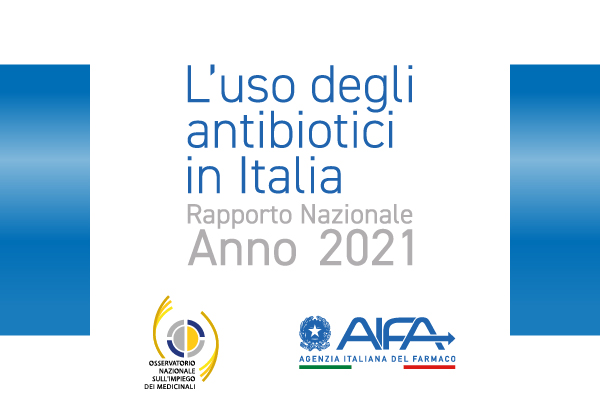.png) Agenzia Italiana del Farmaco
Agenzia Italiana del Farmaco
AIFA publishes the Report "The use of antibiotics in Italy - 2021" - AIFA publishes the Report "The use of antibiotics in Italy - 2021"
AIFA publishes the Report "The use of antibiotics in Italy - 2021"

Press release no. 703 - The downward trend in antibiotic use in Italy continues in 2021 (-3.3% compared to 2020), although consumption is still higher than in many European countries.
Moreover, in the European comparison, Italy shows a greater use of broad-spectrum antibiotics, which have a higher impact on the development of antibiotic resistance. A wide regional variability in consumption is confirmed, with significant room for improvement in prescriptive appropriateness, especially in the Southern Regions.
These are some of the elements that emerge from the Report 'The use of antibiotics in Italy - 2021', edited by AIFA's National Observatory on the Use of Medicines (OsMed), published on the Agency's portal.
The analysis on the use of antibiotics in approved care regime also includes focuses on prescriptions in the paediatric and elderly population, on prescriptions of fluoroquinolones in specific population subgroups, and on the use of antibiotics in patients with chronic obstructive pulmonary disease (COPD).
The Report also examines antibiotic use in hospital settings, private purchasing of Class A antibiotics, consumption of non-systemic antibiotics and indicators of prescriptive appropriateness in General Practice.
The new edition also presents a section on the network of microbiology laboratories and, in accordance with the provisions of the National Antimicrobial Resistance Contrast Plan (PNCAR) 2022-2025, a section that takes into consideration the use of antibiotics in veterinary medicine.
Finally, as in recent years, the Report provides an assessment of the impact of the COVID-19 pandemic on the consumption of antibiotics in the context of approved pharmaceutical assistance and purchases by public health facilities, including the first half of the 2022.
The temporal trends in consumption and the important differences in prescribing patterns between geographic areas that emerge from the Report's data highlight the importance of continuing to monitor, both nationally and regionally or locally, the indicators of consumption and quality of antibiotic prescribing in Italy, as also recommended by the new PNCAR 2022-2025.
HIGHLIGHTS
- The downward trend in the consumption of antibiotics in Italy continues: -3.3% in 2021 compared to 2020
- In 2021, about 3 out of 10 citizens received at least one prescription for antibiotics, with a prevalence that increases with age, reaching 50% in the over 85s.
- In the paediatric population, the greatest consumption is concentrated in the age group between 2 and 5 years, in which about 4 out of 10 children received at least one antibiotic prescription during the year.
- 76% of the doses used were provided by the National Health Service (SSN).
- Almost 90% of the antibiotics reimbursed by the NHS are distributed at the territorial level (under approved care regime).
- More than a quarter of territorial consumption (26.3%) corresponds to private purchases of antibiotics eligible for reimbursement by the NHS (class A).
- Penicillins in association with beta-lactamase inhibitors are confirmed as the class with the highest consumption (36% of total consumption), followed by macrolides and fluoroquinolones.
- There is still a wide regional variability in consumption paid by the NHS, which is greater in the South than in the North and in the Centre. In addition, the largest reductions were recorded in the Northern Regions (-6.1%), while in the South they were more contained (-2.2%).
- In the Southern Regions there is a predilection for the use of second choice antibiotics.
- Overall, consumption in Italy remains higher than in many European countries.
- Italy remains one of the European countries with the greatest use of broad-spectrum molecules, which have the greatest impact on antibiotic resistance and are therefore considered second-line, with a worsening trend in the last two years.
- Italy is also one of the countries with the lowest share of antibiotics of the "Access" group (47%), considered antibiotics of first choice, which according to the WHO should constitute at least 60% of total consumption.
- In the hospital setting in particular, an increase in the use of antibiotics indicated for the treatment of infections caused by multi-resistant microorganisms is observed.
- Both consumption under the approved care regime and purchases by public healthcare facilities increased in the first half of 2022 compared to the same period of the previous year.
Published on: 03 April 2023







